There are, indeed, few merrier spectacles than that of many windmills bickering together in a fresh breeze over a woody country; their halting alacrity of movement, their pleasant business, making bread all day with uncouth gesticulation; their air, gigantically human, as of a creature half alive, put a spirit of romance into the tamest landscape.
Robert Louis Stevenson
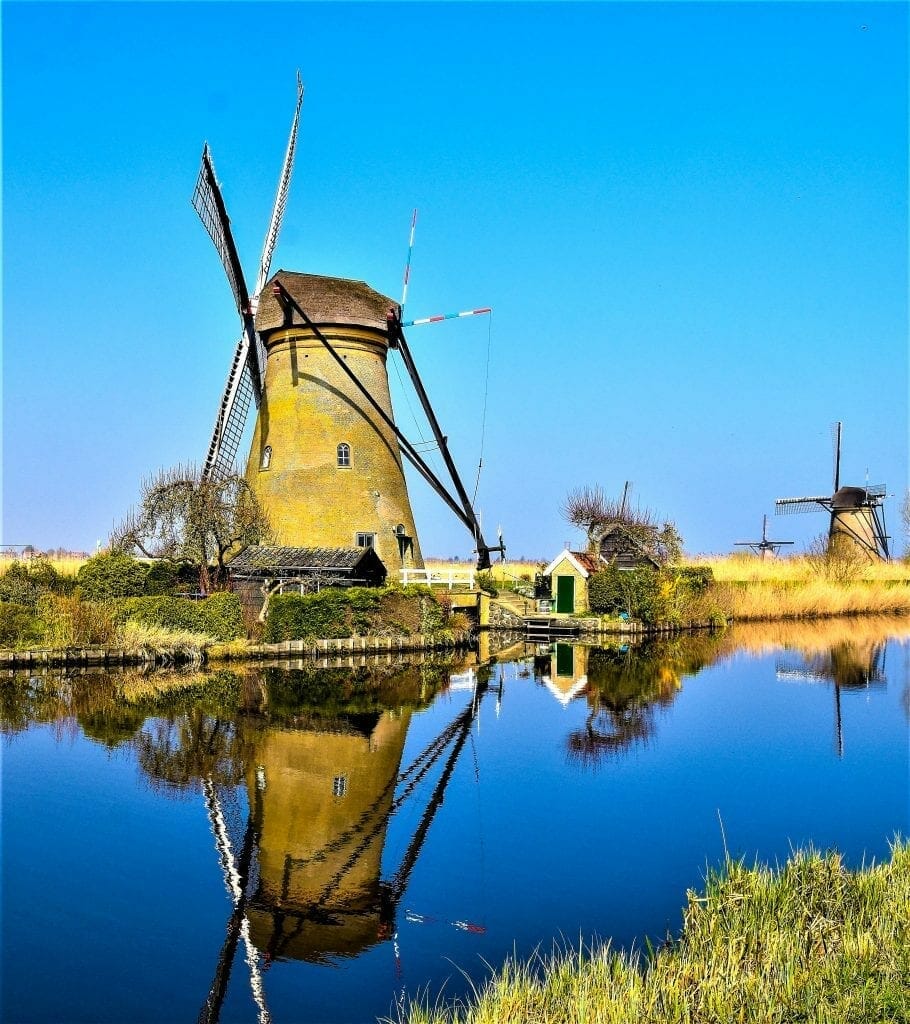

The Dutch Netherlands is synonymous with windmills, and France is synonymous with wine. Most of the iconic photos of windmills are from this area of the world; however, you will find windmills in many other countries across the globe. The Kinderdijk Windmills were on the last leg of an ambitious seven-country tour. It included Iceland, Sweden, Denmark, Germany, Luxembourg, Belgium, and the Netherlands. With our limited time, we knew we had to include windmills or miss out on an essential piece of Dutch history. The research led us to Kinderdijk, which was a great choice.
The History of the Windmills
The Kinderdijk Windmills, an iconic part of the Dutch landscape, are the largest concentration of windmills in the country. Built during the 1700s to keep water out of the polder and pump it into a massive reservoir, they stand proud as National Monuments and have been a Unesco World Heritage site since 1997. This is one of the most impressive collections of windmills in the world.
These 19 remarkable windmills stretch out over a wide area with extensive paths to walk or bike. These ingenious structures are unique due to their size and scale. They are made of brick and can stand as high as 128 feet tall. Kinderdijk, like much of the Netherlands, sits below sea level.
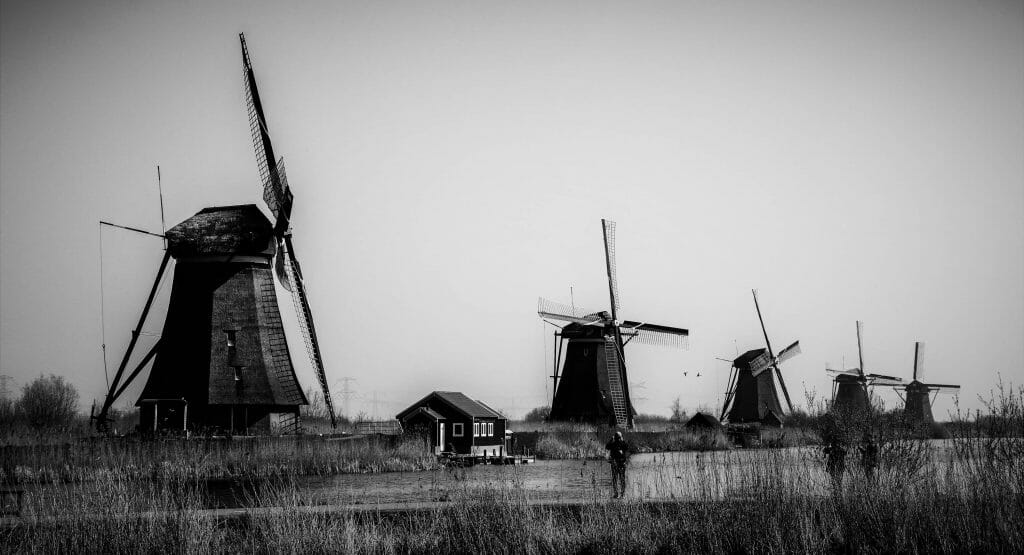

It is fascinating to learn the story of these windmills and their importance to this farming community. Understanding why they exist makes visiting them that much more intriguing. With knowledge, we become even more appreciative of what we are privileged to see.
What is a polder?
What a polder is an essential part of understanding why these windmills exist. Polders are tracts of land below sea level and are reclaimed from the ocean, lakes, rivers, or wetlands. This is done by building dykes, drainage canals, and pumping stations. “Polders are land reclamations, but not all land reclamations are polders.” They are predominantly found in the Netherlands, but in the U.S., New Orleans is home to several polders.
The Kinderdijk Windmills
The Kinderdijk milling complex consists of the following:
1. Eight stone brick windmills of the waterboard Nederwaard, which were built in 1738
2. Eight thatched windmills of the waterboard Overwaard built in 1740
3. Two stone windmills of the polder Nieuw-Lekkerland built in 1760
4. One windmill of the polder Blokweer built in 1521 was burned down in 1997. Since that day, the windmill has been restored and operational since the spring of 2000.
All the Kinderdijk windmills are watermills, which means they are only used for draining.
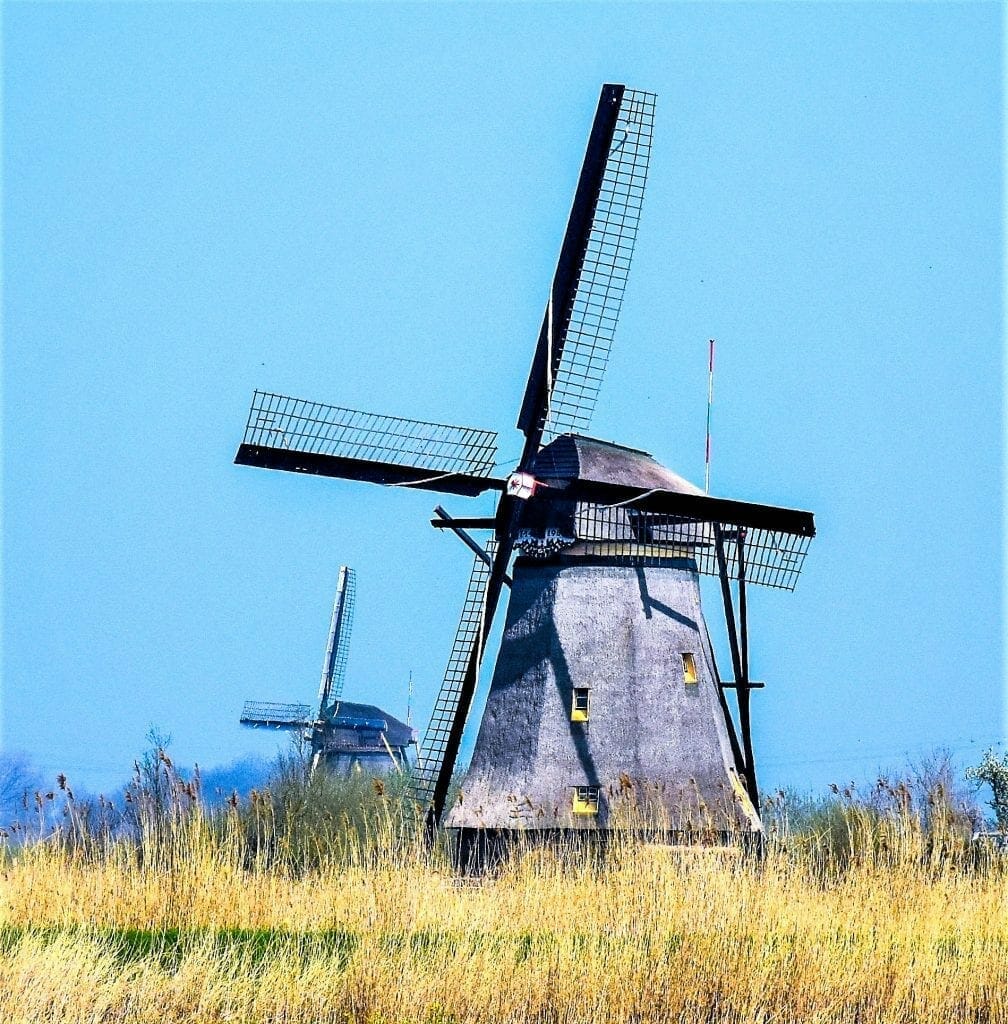

Kinderdijk lies in the Alblasserwaard polder, at the convergence of the Lek and Noord rivers. In Alblasserwaard, problems with water became very apparent in the 13th century. Large canals called “weteringen” had to be dug to eliminate the excess water in the polders. As a result, the drained soil started settling, while the river level began to rise due to the river’s sand deposits.
Kinderdijk is the final station of the Alblasserwaard polder’s water, approximately ten by 20 miles wide, before the river Lek enters the sea. Even today, they still need to remove the water that the rains bring. Since the 1950s, the function of these windmills has been taken over by electrical and diesel pumping stations, some of the largest in the world.
The windmills are not obsolete, though, in an emergency, the Kinderdijk Windmills can still remove water from the polder.
A lesson on water management
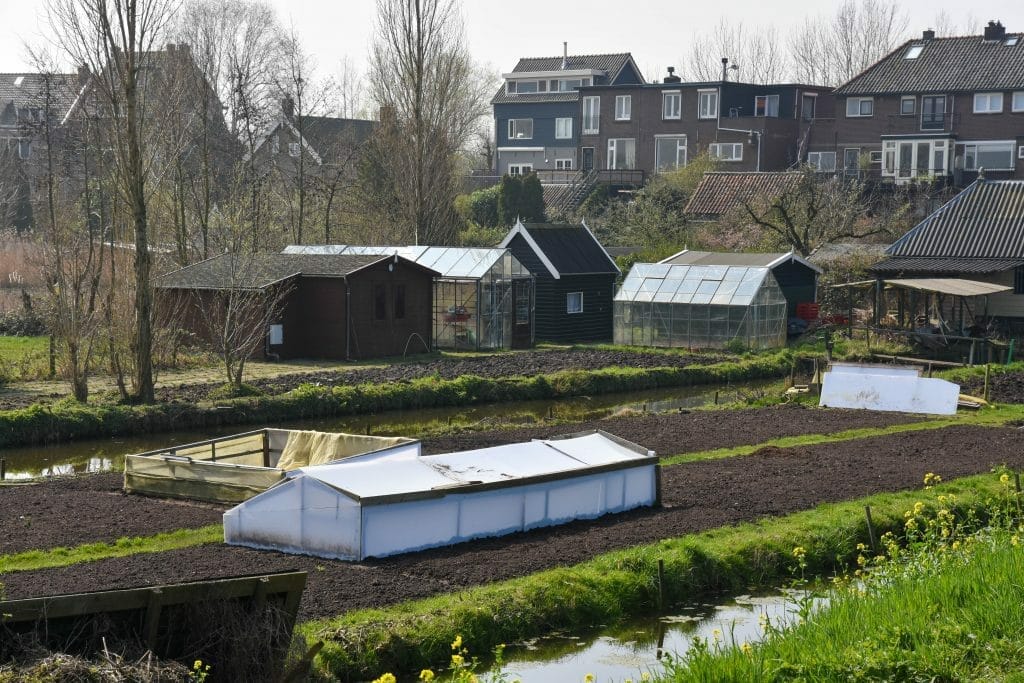



The Dutch Netherlands has a proud and ancient tradition of working together with the water. Along with Kinderdijk, 25% of the Netherlands is below sea level. If they let nature run its course, those parts of the Netherlands would be flooded, and 60% would be threatened with flooding!
So, how does the reclaiming take place? The first step is to build a dike around a large piece of water. Once contained, the water is pumped out of this large area. The pieces of land created are called polders and can now be used for farming and industrial purposes.
Draining can take place by windmills or mechanical pumps. Before modernization, Holland had over 10,000 windmills draining these polders. Later, large parts of Holland were drained by pumping stations powered by steam machines and later by electricity and diesel.
The one significant advantage of a windmill is that it is a free form of energy, unlike fuel, which has to be paid for. One of the disadvantages of a windmill is that it is unreliable; there is no pumping when there is no wind.
Holland Windmills by the numbers
Capacity of a windmill:
40 m3/min = 40.000 litres/min
The Capacity of the Nederwaard pumps:
1350 m3/min = 1.350.000 litres/min
The Capacity of the Overwaard pumps:
1500 m3/min = 1.500.000 litres/min
Length of the blades: 13 meters
Windmills left in Holland: 1000
Costs of maintenance per windmill:
on average $ 50.000 per year
Minimum space between buildings and the windmills:
400 meters
from kinderdijk.org
Modern times
However, the main disadvantage of a windmill is the power it can produce compared to a mechanical pump. Not only can a mechanical pump move more water, but it can also lift it higher than a windmill.
A windmill can lift the water to a maximum of about four feet. Two windmills are placed in a cascade to cope with a difference of over seven feet, creating three water levels. First is the polder level; this is the level where farming takes place.
Then, a windmill pumps the water to the second level called the boezem level. This water movement is similar to blood veins through the Alblasserwaard. The water is then brought to Kinderdijk, where the water is pumped up again by a set of eight windmills to another level called the reservoir.
The water stays here until the reservoir level meets the river’s average high tide, and then it flows into the river at low tide utilizing sluices, which are gates that control the water flow.
What are other uses of windmills?

In older times, windmills used wind power to create rotational energy for mills, pumps, and presses. In modern times, they are most commonly used to generate electricity. Wind causes its blades to spin, thereby creating kinetic energy. The spun blade turns a shaft, which in turn spins other blades, which are attached to generators that produce electricity.
The power of the wind was first harnessed by sailors, who could understand how to lift and harness the wind’s power through the sails. This knowledge resulted in the development of the first vertical-axis sail-type windmill. The ancient Persians and Chinese used these for grinding grain and pumping water.
The first windmill to appear in Europe was the post mill with a horizontal axis system, with a four-bladed mill attached to a central post. Horizontal axis systems are the basis for current wind turbine technology that produces energy.
Planning a trip to The Netherlands? Check out our Netherlands Travel Guide
The Uniqueness of the Kinderdijk Windmills
You won’t find a windmill complex like the Kinderdijk Windmills anywhere else in the world. The ingenious system of windmills and pumping stations has kept the soil dry here for centuries. It is a constant struggle between human brains and the power of the water. Visitors come from across the world to experience this unique piece of history.
Kinderdijk is a monument to the history of humankind, and they were officially made a UNESCO World Heritage Site in 1997. The story of Kinderdijk is now a genuine part of world history, protected for future generations to visit and experience.
Visiting the Kinderdijk Windmills
Three are now museum mills, called Museummolens, each with a story. One of the museums can only be reached by boat. At the ‘Hulpgemaal De Fabriek’ (auxiliary pumping station), you can watch the multiscreen movie. At the Molenwerkplaats (mill workshop), the operation and maintenance of the windmills are explained.
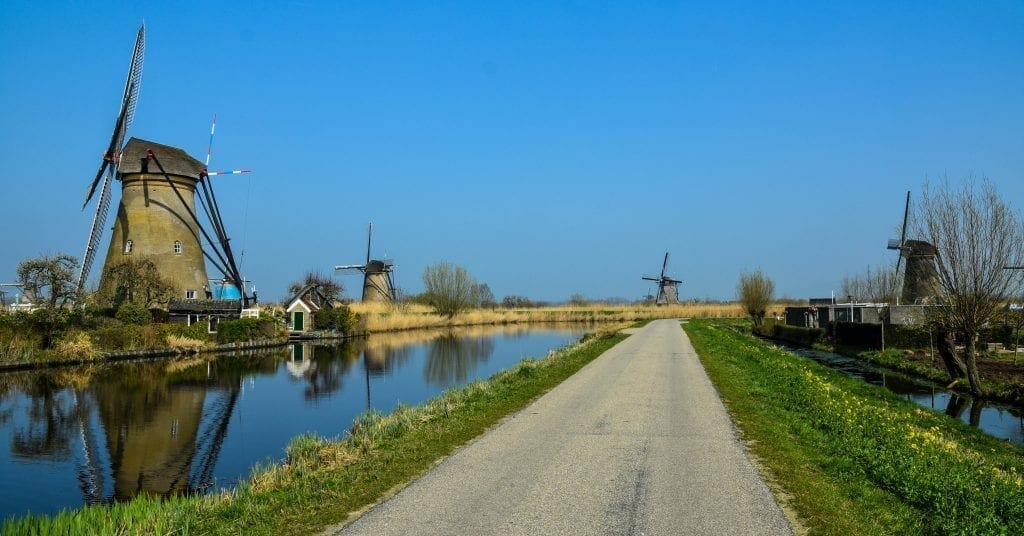

Learning how the brilliant Dutch have controlled the waters for over 1000 years is fascinating. Some of these windmills remain operational but are no longer the primary source for water pumping. Some windmills are homes where you will find children playing in the yard while their parents work in the garden. It spoke both of the simplicity of life and the preservation of history. There is also courage reflected as they are always at the mercy of Mother Nature while trusting the system built to protect them. The setting is quite beautiful and serene.
What we enjoyed the most was wandering around the paths. Photographing the windmills and the surrounding landscape from various angles was tons of fun. This is farmland which means lots of animals and fields of crops. Like most European places, many friendly cats will greet you along your path.


Renting a bike would have been a blast if we had more time. The windmill area is quite large, and no cars can not enter. It would take quite a while to walk it all, but so worth it.
Opening hours vary by season. Check the official site for up-to-date information.
Activities in the area
- If you want to fit right in, bike the area of the Kinderdijk Windmills. You can rent bikes in Kinderdijk or from Rotterdam and cycle in. Kinderdijk is easily accessible by bicycle from nearby cities such as Gouda, Dordrecht, and Rotterdam.
There are 14 miles of biking trails in the area. Bike tours are a popular way to visit while learning about these windmills. With more than fifty windmills in the greater area, a cycling route through the Albasserwaard is recommended to anyone who wants to experience more of Holland’s beauty. - Photography tours
- National Park De Biesbosch is a unique freshwater tidal area with fascinating plants and wildlife.
- The town of Dordrecht is the oldest city in Holland.
- Rotterdam
- Hague
- Visit the tulip fields in the spring
- Keukenhof Gardens
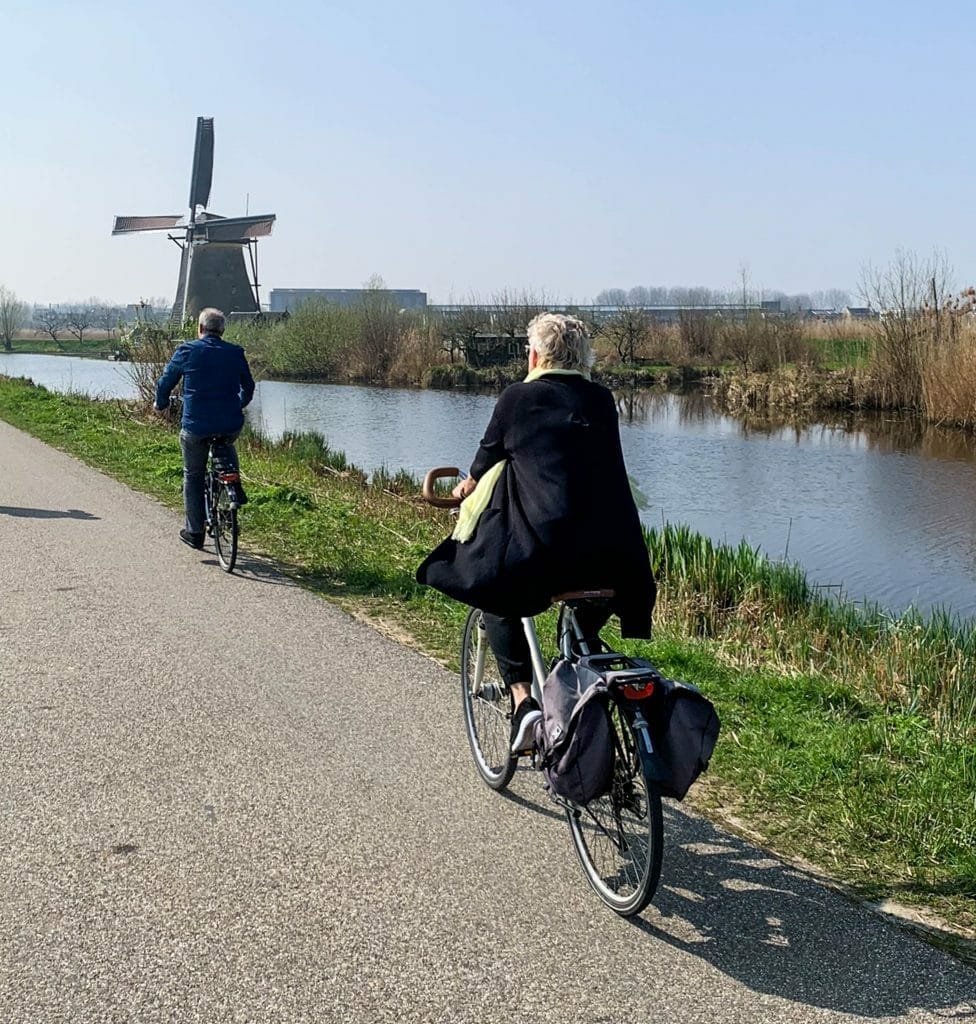

Where to stay
The most sensible option would be to stay in the Rotterdam area, which is only 12 miles away. This way, you have a great place to visit in the evening. The towns of Kinderdijk and Dordrecht also have accommodations if you seek a more small-town experience. We did not stay in the area and stopped here on the way to Amsterdam, our last trip stop, before flying out.
Here are some links to the area where you can find places to stay. Click anywhere on the lines below to go to the site. Our master list of all travel resources we recommend is in a block at the bottom of this post.
It is important to price out accommodations on various sites. Expedia is a US-based company, whereas Booking.com is Europe-based. Not all properties appear on both, so it is ideal to check both out. Our personal first choice is Booking.com. If the establishment has a website, check the price there as well. Click the link below to check out hotels and vacation homes in the area. It may be just the motivation you need to start planning that next grand adventure.
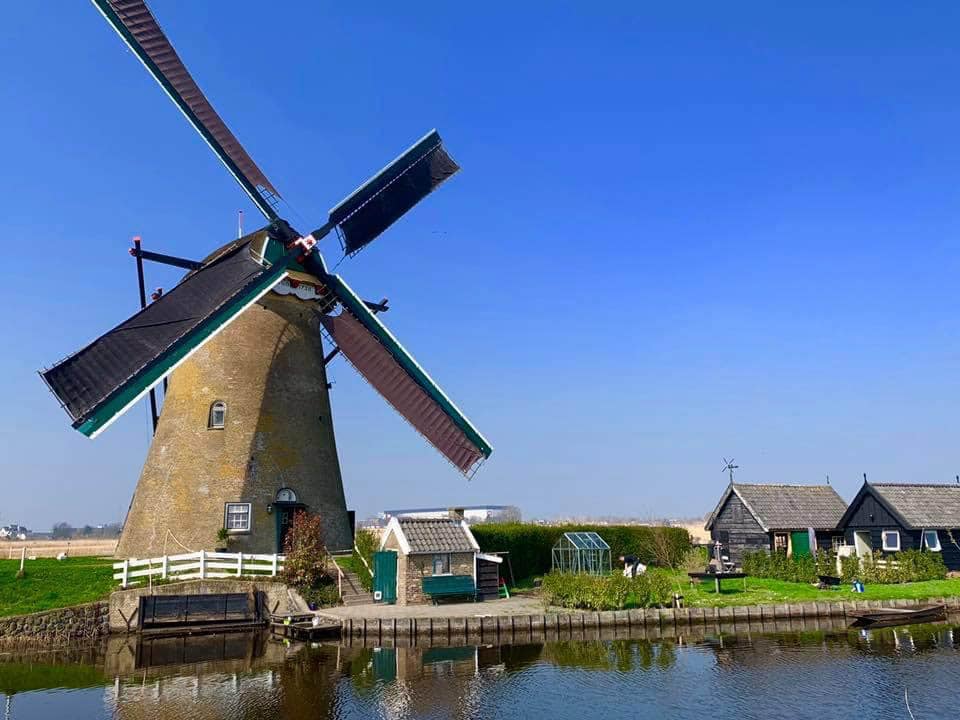

How to get to the Kinderdijk Windmills
The Kinderdijk Windmills are about 12 miles from Rotterdam and approximately an hour and a half’s drive from the capital city of Amsterdam. Holland’s oldest city, Dordrecht, is six miles away.
Kinderdijk is also easily accessible by public transportation. If visiting by car, pay attention to where you may and may not park. We had no concerns about finding parking, but getting to the windmills was a bit of a hike.

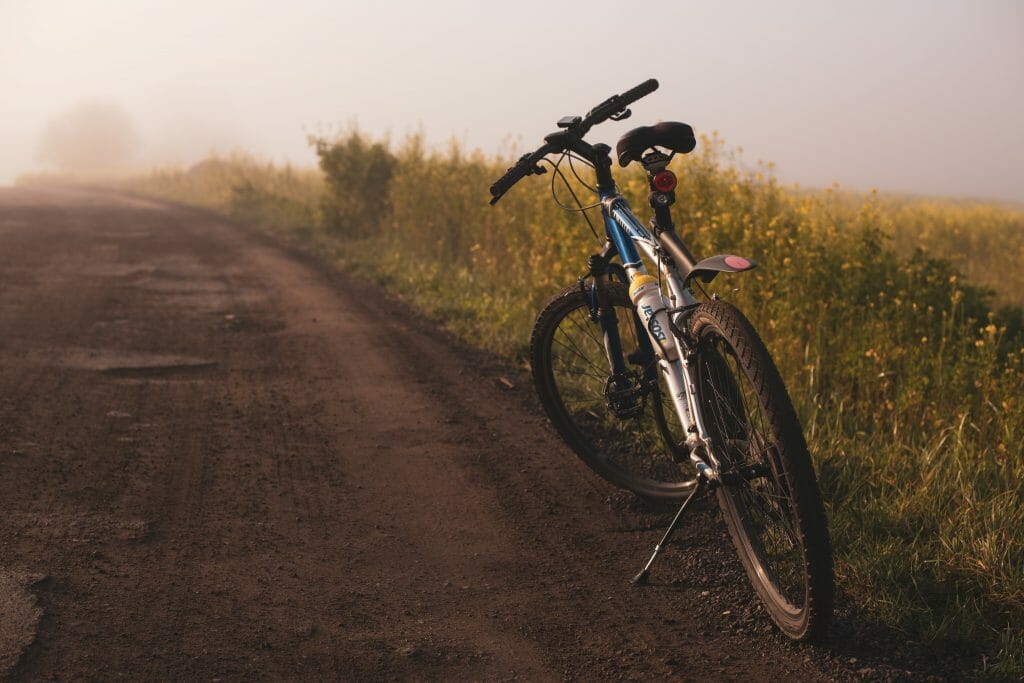
Kinderdijk is also easily accessible by Waterbus. The boat trip lets you enjoy the beautiful surroundings, and you can bring your bike free of charge. The Waterbus to Kinderdijk departs from the historic city centers of Dordrecht and Rotterdam.
It is also possible to cycle to Kinderdijk from Rotterdam. It’s a lovely route with gorgeous scenery to captivate you.
Best time of year to visit the Kinderdijk Windmills


The Netherlands is a relatively mild climate year-round due to its proximity to the ocean. The hottest month of the year is July at 64 degrees Fahrenheit with the high in the low 70s. The coldest and windiest month of the year is January, which averages 39 degrees with a low of 34 degrees. The wettest month of the year is September.
Final Thoughts
Our plans started with, ”If in the Netherlands we had to stop and visit windmills, ” but we did not expect to be so drawn into the setting and the windmills themselves. Kinderdijk is the story of the past and the present. It is a testament to man’s ingenuity as far back as medieval times and current times. Kinderdijk speaks to the outstanding contribution of the Netherlands’ people to water-handling technology. Do not miss these mills or this beautiful area of Holland.
© 2025 Wanderers Compass All Rights Reserved
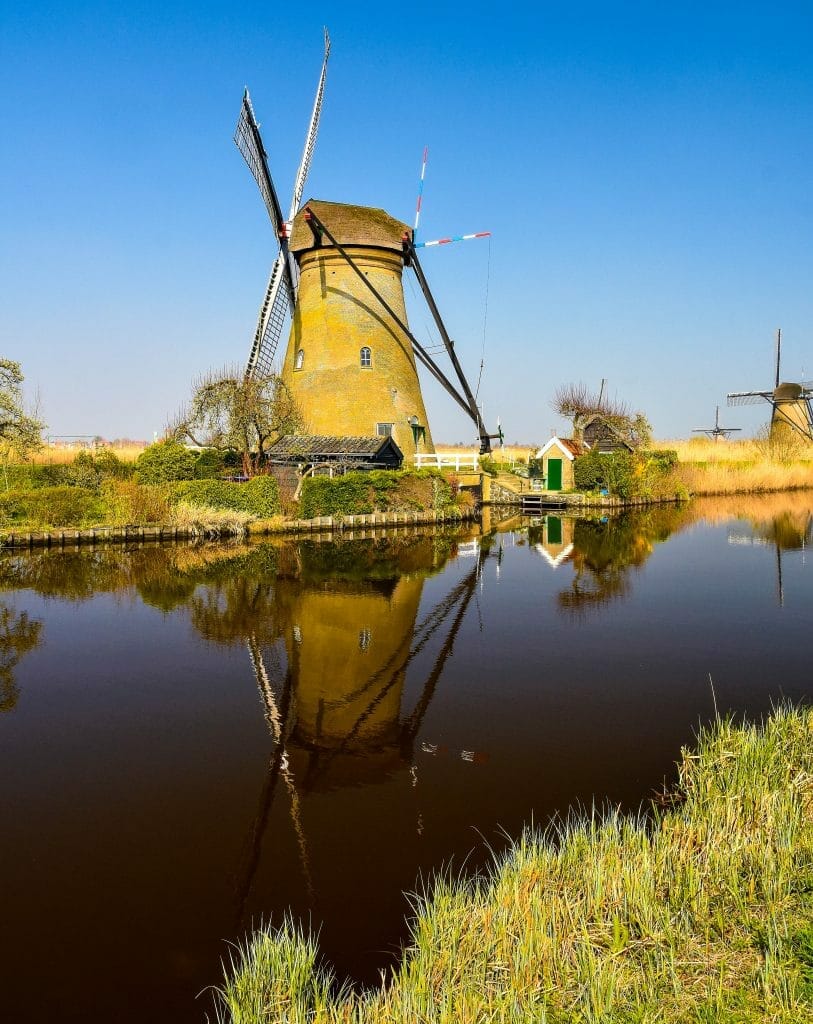

Check out the Official Kinderdijk tourist information page, which includes the history of the miller and the windmill, plus many unique pictures of Kinderdijk and its surroundings
Check out our article on nearby Delft, Netherlands
Our Kinderdijk Windmill Photo Gallery





















Check out our most recent blog posts
Savoia Excelsior Palace Trieste: Coastal Luxury & History
Discover the elegance of Savoia Excelsior Palace in Trieste, Italy—a Starhotels Collezione property offering…
April 23, 2025Presidio: Exploring San Francisco’s Iconic Park
Uncover the charm of the Presidio in San Francisco. This unique park offers a…
April 22, 2025Airline Elite Status Match: A Travel Hack
used my Alaska Airlines MVP status to match into United Gold, and within one…
April 21, 2025Nyhavn: Explore the Vibrant Canal District
Explore the vibrant Nyhavn in Copenhagen, where history, culture, and beautiful scenery create an…
April 16, 2025Tavira Portugal: Suberb Mix of Tradition & Nature
Uncover the beauty of Tavira, Portugal. Experience its blend of history, authentic culture, and…
April 12, 2025Easter Island: Beyond the Moai
Discover the magic of Easter Island in our latest feature for Food, Wine, and…
April 3, 2025Eze France: Medieval Splendor
Charming Eze, France, is a picturesque hilltop medieval village renowned for its breathtaking panoramic…
April 1, 2025Traveling with Accessibility Challenges: A Lesson in Resilience and Discovery
Traveling with a disability taught me valuable lessons about patience, resilience, and the importance…
March 24, 2025Siena Italy: A Medieval Wonderment
Explore the medieval city of Siena, Italy – a gem in Tuscany. Become captivated…
March 22, 2025Want to learn about Wanderers Compass?
Our Top Recommended Travel Products
Travel Insurance
Squaremouth.com
Our favorite travel insurance site!
We strongly advocate for comprehensive travel insurance, not only for minor inconveniences but also for major, unexpected events like medical emergencies. We never leave home without it. Our go-to resource is Squaremouth.com. which offers a user-friendly platform that connects you with top-rated, reputable insurance carriers. Plus, they’ll mediate on your behalf if you run into any issues.
To empower you as a consumer, we recommend you read our blog post on why travel insurance is essential and how to secure the best coverage from leading companies at an affordable price.
MedjetAssist
Medical transport back home from anywhere in the world
Medjet is a leading provider of global air medical transport. Unlike traditional travel insurance, which typically covers medical evacuation to the nearest facility, Medjet goes further by ensuring you’re transported back to the U.S. to the hospital of your choice once you’re stable enough to fly. Medjet offers membership plans that focus on medical transport, while Medjet Horizon provides expanded coverage for broader protection. Individual trip policies start at just $99, and annual policies are available for around $300. Most policies have an age limit of 74.
To learn more about how Medical Evacuation membership with Medjet Assist works, check out our blog post for a more detailed review.
Accommodations and Airfare
Booking.com
Hotels, Home rentals, BNBs, Flights, and other Transportation & Tours
Booking.com connects millions of travelers to unforgettable experiences, a wide range of transportation options, and incredible places to stay—from homes to hotels and beyond. As one of the world’s largest travel marketplaces, it supports well-known brands and entrepreneurs of all sizes. For its convenience, variety, and reliability, it’s our preferred booking platform.
Transportation
Expedia and VRBO
Hotels, home rentals, BNBs, flights, and other transportation & tours
Expedia is a U.S.-based company with a mission to make global travel accessible to everyone, everywhere. At Wanderers Compass, we embrace independent travel, and platforms like Expedia are essential to making that a reality. Expedia allows you to book every aspect of your trip—from flights and accommodations to rental cars, cruises, and activities—making it a one-stop shop for all your travel needs.
Daytrip
Personalized city-to-city private car transfer service
Daytrip provides an affordable private car service for city-to-city transfers worldwide, and we absolutely love their service. It’s a cost-effective alternative to renting a car, providing comfortable, stress-free travel with the bonus of scenic stops along the way. For example, we used Daytrip for travel between Budapest and Vienna, enjoying some fantastic detours to local attractions. With professional drivers and customizable routes, Daytrip ensures a smooth ride while allowing you to explore hidden gems and unique sights along your journey.
To learn more about how Daytrip, check out our blog post for a more detailed review.
Travel Experiences
Viator
The leading marketplace for travel experiences
Viator believes that travel is all about creating unforgettable memories. With over 300,000 experiences to choose from—ranging from simple tours to extreme adventures, plus a wide array of unique, niche activities—it’s never been easier to make lasting memories. We frequently use Viator during our travels and especially appreciate their flexible cancellation policy, which adds peace of mind to every booking.
Communication products for seamless connectivity overseas
GigSky International eSIM Data Plans
Local Prices. No Roaming. Fastest Networks.
GigSky eSIM effortlessly connects travelers around the globe, eliminating the need to swap physical SIM cards or deal with surprise roaming charges. With affordable data plans and instant activation, you can enjoy reliable internet access in over 190 countries, making your travel experience more convenient than ever. Plus, they offer a fantastic deal: a free 100 MB data plan with no credit card required. They are so confident that you will love their service!
Enjoy 10% off all GigSky Plans (except cruise and inflight) with our discount code WCOMPASS10.
To learn more about how GigSky works, check out our blog post for a more detailed review.
Shopping
Wanderers Compass Amazon Storefront
An excellent source for all travel essentials and guides that we have vetted ourselves
Amazon is one of the world’s most comprehensive online shopping platforms, offering lower prices, a wide selection, and fast delivery through teams worldwide.
This page contains affiliate links. When you purchase through these links, we may earn a small commission at no extra cost to you. Thank you for your ongoing support!











